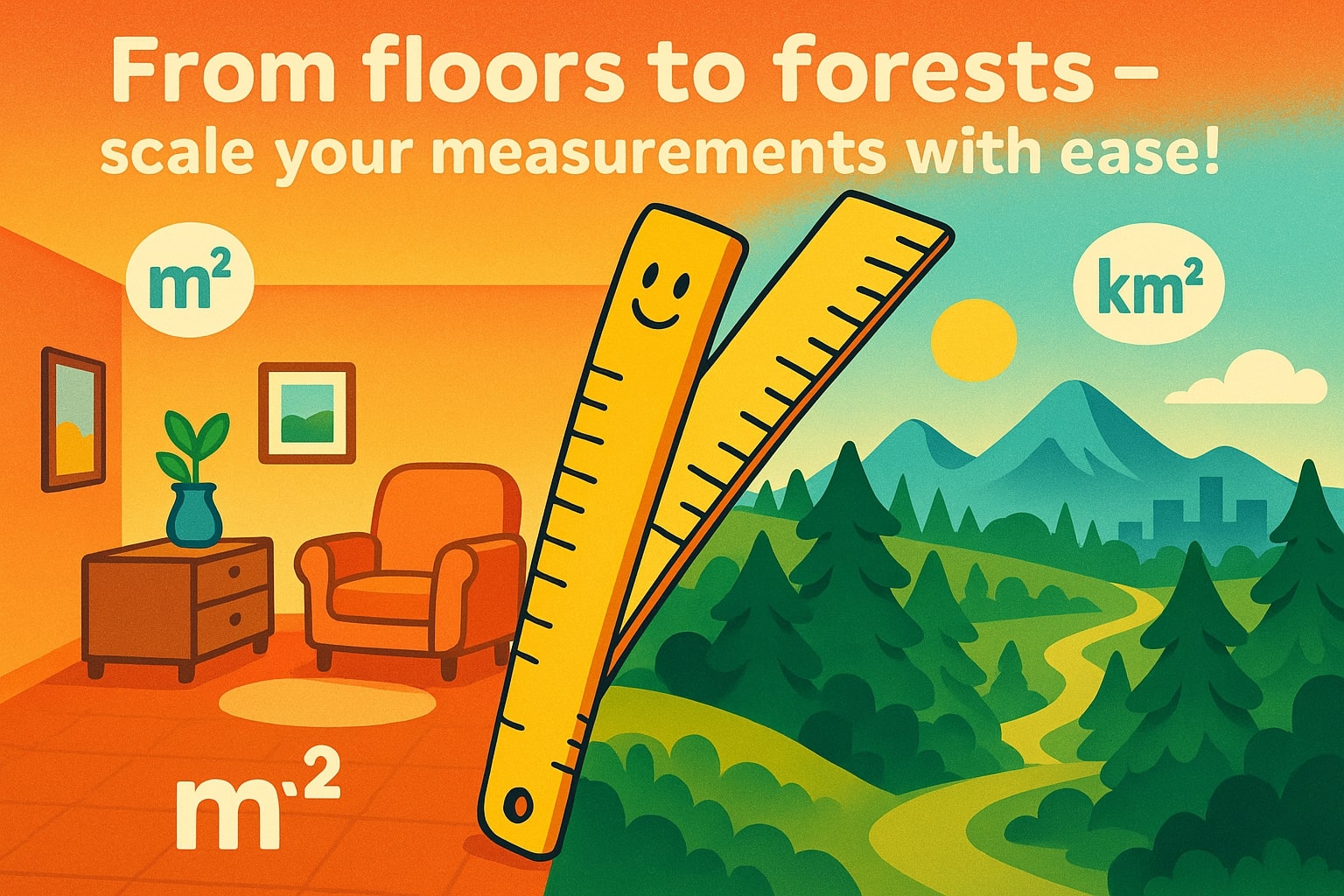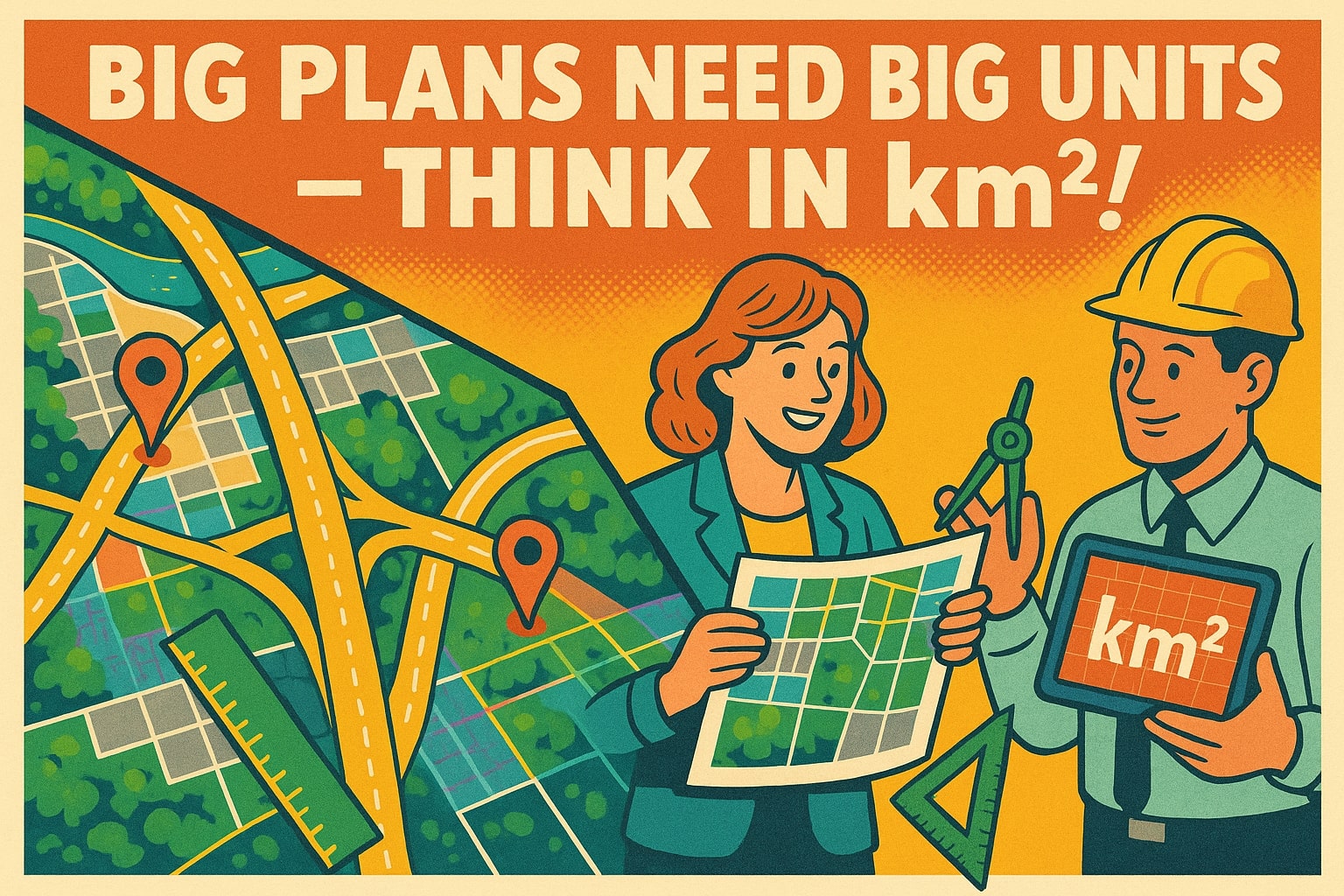square meter to square kilometer – How to convert m² to km²
When the area you’re measuring goes beyond the size of a home or garden — and starts to cover entire neighborhoods, city blocks, or rural land — square meters become a little too small to be practical. That’s when square kilometers (km²) step in. This unit is perfect for describing big spaces, and converting from square meters to square kilometers is easier than you might think.

What is a square meter (m²)?
A square meter is the metric base unit for area — it covers a square that’s one meter long and one meter wide. It’s useful for measuring everyday things like:
-
Floor space in buildings
-
Room dimensions
-
Small construction plots
-
Landscape layouts
It’s a flexible and widely used unit — until you start dealing with serious land coverage. That’s where it gets cumbersome.
What is a square kilometer (km²)?
A square kilometer is a much larger metric unit, used to measure expansive areas. One square kilometer is equal to:
1 km² = 1,000,000 m²
You’ll see km² used to describe:
-
Land masses on maps
-
Forest areas and national parks
-
City and municipality sizes
-
Agricultural zones and rural regions
This unit keeps large-scale geography clean and readable, especially in reports, planning documents, or environmental studies.
How to convert square meters to square kilometers
The conversion from m² to km² is based on the fact that:
1 km = 1,000 meters
So:
1 km² = 1,000 × 1,000 = 1,000,000 m²
Formula:
square kilometer = square meter ÷ 1,000,000
Just divide the number of square meters by one million to get square kilometers.
Example: converting square meters to square kilometers
Let’s say you’re evaluating a forest reserve that spans 2,800,000 m². Here’s how you convert that:
square kilometer = 2,800,000 ÷ 1,000,000
square kilometer = 2.8
So, 2,800,000 m² is equal to 2.8 km² — a manageable forest area or medium-sized island.
Need to skip the math? Try our Area Converter or find more converters with Conversion tools.
Did you know?
-
The entire city of Paris covers about 105 km², or 105,000,000 m².
-
1 square kilometer is equal to 247.105 acres, which bridges the metric and imperial land systems.
-
The Amazon Rainforest spans over 5.5 million km², a number impossible to grasp without breaking it down by square kilometers.
-
Many national parks use km² in their legal documentation, especially for zoning, conservation, and environmental planning.
-
Satellite imaging systems are calibrated in km² for large-scale surveys like crop monitoring or urban development tracking.
From satellite maps to city planning: where km² makes sense
In urban planning and environmental science, large-scale maps are essential. When governments or organizations assess land use, they don’t want to deal with thousands of square meters. Instead, they zoom out — literally and mathematically — to work with square kilometers.
Take city zoning for example. When dividing districts, creating green belts, or planning transportation networks, the unit km² is far more efficient than constantly juggling strings of zeros. Even in infrastructure projects like highway systems or flood mapping, square kilometers give engineers and planners a clean, scalable view.
In geography, the shift from m² to km² makes natural sense. Countries, states, and provinces list their land area in square kilometers to keep comparisons manageable. For example, Singapore has a total area of about 728 km², while Luxembourg spans over 2,500 km². These figures would be unreadable if expressed in square meters.

A simple move to a bigger scale
All it takes is a division by 1,000,000:
square kilometer = square meter ÷ 1,000,000
When you’re dealing with expansive land, city infrastructure, or ecological zones, square kilometers keep your calculations readable, efficient, and globally understood. So if your area starts stretching across maps or borders, it’s time to switch to km².
Need to convert more area units? Try the Area Converter, or explore our full selection of Conversion tools for everything from land size to volume and beyond.

